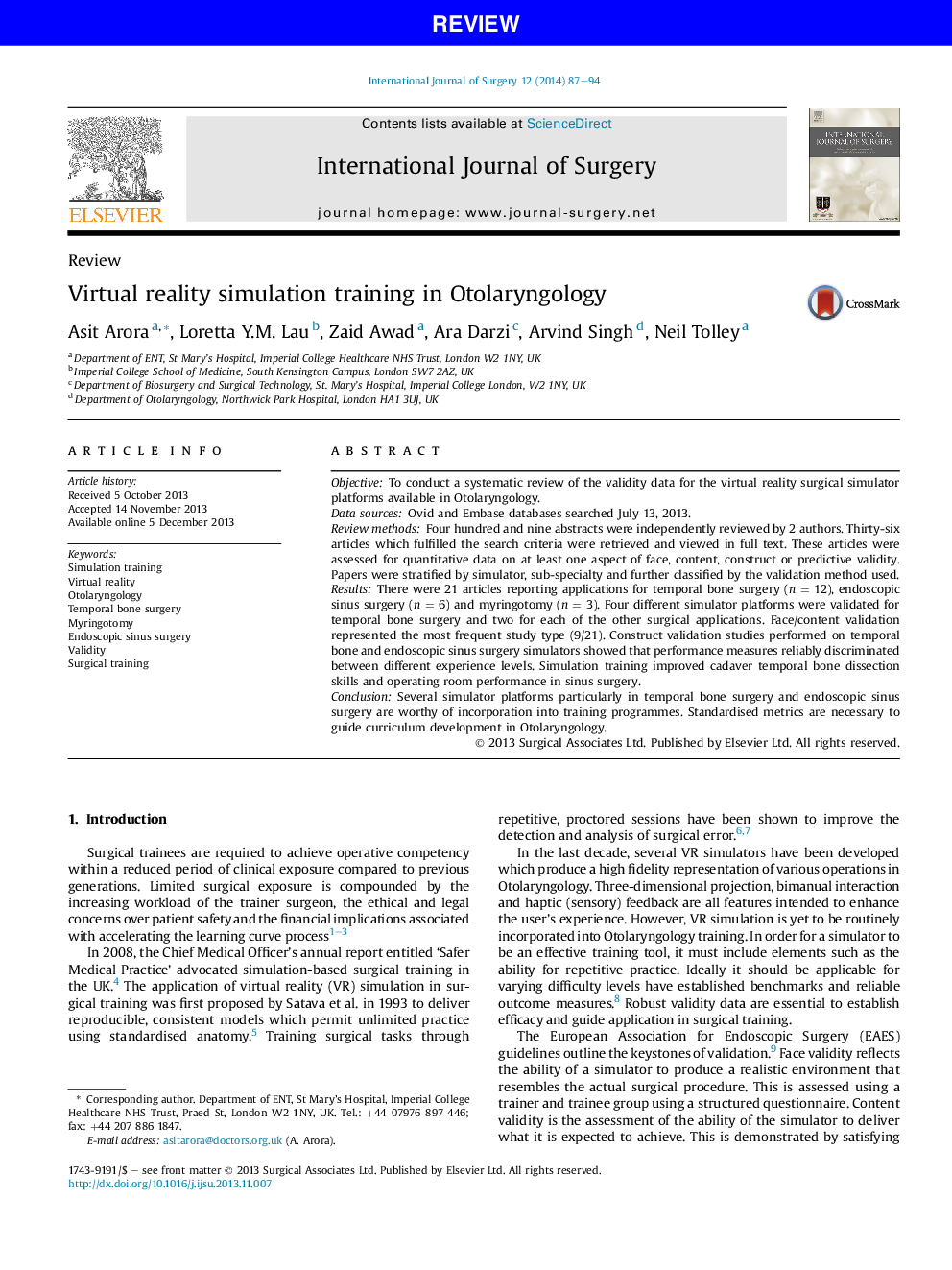| Article ID | Journal | Published Year | Pages | File Type |
|---|---|---|---|---|
| 4285962 | International Journal of Surgery | 2014 | 8 Pages |
ObjectiveTo conduct a systematic review of the validity data for the virtual reality surgical simulator platforms available in Otolaryngology.Data sourcesOvid and Embase databases searched July 13, 2013.Review methodsFour hundred and nine abstracts were independently reviewed by 2 authors. Thirty-six articles which fulfilled the search criteria were retrieved and viewed in full text. These articles were assessed for quantitative data on at least one aspect of face, content, construct or predictive validity. Papers were stratified by simulator, sub-specialty and further classified by the validation method used.ResultsThere were 21 articles reporting applications for temporal bone surgery (n = 12), endoscopic sinus surgery (n = 6) and myringotomy (n = 3). Four different simulator platforms were validated for temporal bone surgery and two for each of the other surgical applications. Face/content validation represented the most frequent study type (9/21). Construct validation studies performed on temporal bone and endoscopic sinus surgery simulators showed that performance measures reliably discriminated between different experience levels. Simulation training improved cadaver temporal bone dissection skills and operating room performance in sinus surgery.ConclusionSeveral simulator platforms particularly in temporal bone surgery and endoscopic sinus surgery are worthy of incorporation into training programmes. Standardised metrics are necessary to guide curriculum development in Otolaryngology.
